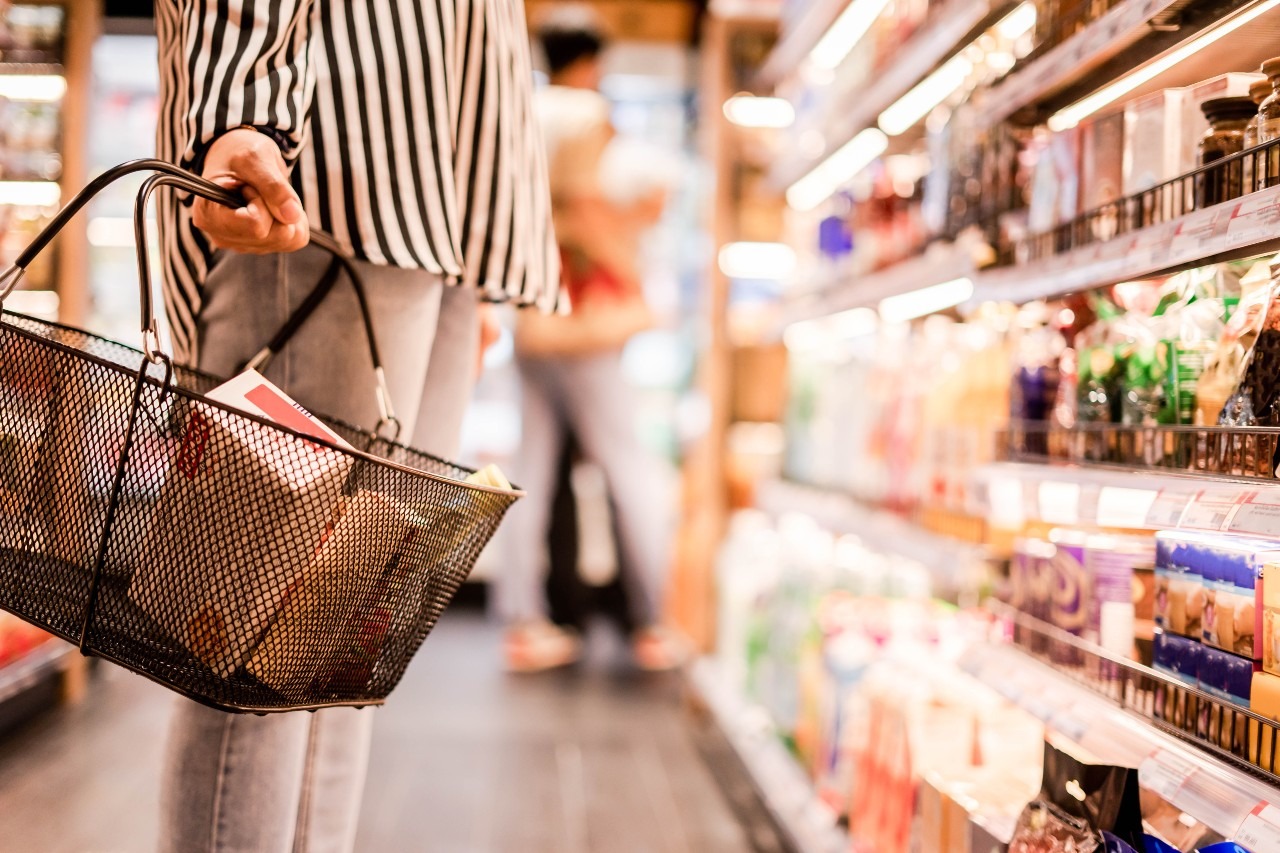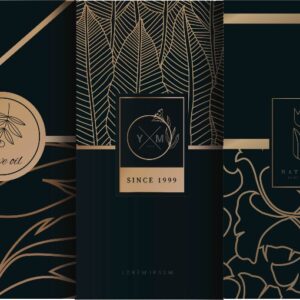Focus on the global capabilities of finishing in packaging sector, which delivers the ability for products to stand out on the shelf.

Foils and finishing add greater value to products to attract consumers. (Credit: thebigland/Shutterstock)
Perhaps second only to ‘protecting the product within’, finishing is possibly the second-oldest trend when it comes to packaging. While sustainability, lightweighting and on-the-go for-mats look set to stick around, finishing delivers the ability to stand out on the shelf – which is always in fashion. Emma-Jane Batey speaks to the expert of finishing, Conni Dreyer, CEO of Dreyer Kliche, to learn about how she is bringing her endless delight of the global capabilities of finishing to her customers.
Denmark’s Dreyer Kliche calls itself ‘the home of precision tooling and innovative ideas’, with its website packed with tangible examples of how it is ‘bringing design to life’ through the global capabilities of finishing in creative print.
But it is in talking to CEO Conni Dreyer that one really gets in close contact with the true spirit of the company; not only does she know everything about how beautiful finishing can add value to packaging and products, but she explains it in a way that helps realise the potential delight in getting it right.
To some extent, this article may be preaching to the choir as this is Converting Today. Perhaps it is lucky that there is a ban on large gatherings at the time of writing, so as not to bore – or wow – listeners with in-depth knowledge of the EU SUP Directive. But, somehow, Dreyer manages to make talking about the global capabilites of finishing a pleasure, from colours to textures, to fantasy – all with grace and style.
So, in the very beginning (1945), Jorgen Dreyer founded a traditional repro and cliché company called Dreyer Repro, with its primary focus on zinc plates for newspaper printing. In 1994, his daughter-in-law Dreyer took over the company, taking it further towards the innovative, quality-conscious business it is now, with year-on-year growth and an over 80% export outside of Denmark.
Dreyer generously explains how the company has only been able to grow because of its people and the smart partnerships it has developed, with award after award highlighting its achievements and colourful images peppered throughout its website showing how it’s earned all these accolades.
A global variety of finishing options
Dreyer Kliche offers dyes and foils for finishing on a broad range of substrates, with its almost limitless portfolio including embossing, textures, hot foils and holographics. “Foils and dyes go hand in hand; finishing is all about adding value to products and showing how creating a little extra wonder and beauty makes all the difference,” Dreyer tells Converting Today.
“Reports show that consumers take less than three seconds to decide whether or not they’ll buy a product they’ve seen, so whatever you can do in those three seconds to catch their eye and make your product more appealing, the better. So, foiling, varnishing, texture, whatever gives that luxury look and feel.”
Dreyer gives an example of how a Danish baking paper product changed just one detail about its packaging – adding foiled writing on the negative white branded part of the packaging – increased its sales by 40%, even though the brand also increased its price by one krone.
“I love reading about consumer behaviour, to understand what it is that makes consumers feel good about what they’re buying, to see a product as desirable and worthy of their money,” she says.

“I’ve seen incredible reports of eye-tracker technology that shows two versions of the same product – except one has foiling on the packaging – and the foiled version is more quickly and more readily added to the basket. It stands out on the shelf. We are basically programmed to like shiny, beautiful things.”
Dreyer Kliche can certainly help brands offer their packaging in “shiny, beautiful things”. The company has produced a clever little flipbook, called Finishing Tool Guide, which details its global capabilities of finishing in a visual way, offering a clear comparison between the options and explaining how best to maximise each one.
“It’s proven that foiling makes a product stand out and attracts the eye of the consumer, but it can be hard to explain that, so we have created this lovely little book that clearly shows the different finishes and how they look on various types of substrate,” Dreyer explains.
“It brings that tactile feeling and highlights how different varnishes, textures, embossing and whatever else can bring a whole new dimension to a product’s packaging.
“We’ve had great success with these books as they are a super way of explaining what we do. Plus, they’re easy for designers and brand owners to keep, and refer back to.”
Understanding e-commerce and consumer trends
With the rapidly growing trend in e-commerce a clear differentiator for brands that do or don’t flourish online, the ways in which texture and finishing can be conveyed by e-commerce websites is up for debate. With the right lighting, certainly, beautifully finished packaging can be visible, but Dreyer shares how luxury markets are less impacted by this trend.
“I love to walk around beauty shops like Boots in the UK, or duty-free at the airport, to see what consumers are picking up; I even ask them why they bought a certain product. It’s so often the finishing on the product and its packaging that attracts the end consumers.
Special substrates, a unique look and feel, this can be hard to translate to online shopping as you need to see it and feel it,” she says.
“For many luxury brands – the type of brands that we work with like Dior and Lancom – the consumer has a positive expectation that the product will be glamorous; so often they’ve seen it in a lovely store before, but they may buy it online anyway. Dior uses a lot of wonderful finishing on its products and it helps to continue to value and promote the luxuriousness of the brand.”
Dreyer also notes with amusement the unforeseen trend of consumers reselling their high-end brand boxes online – empty. “Young people buy the empty boxes from these famous brands online and then display them.
“I’ve heard of this for the shopping bags from well-known designer brands too. It all helps in terms of engaging with the consumer; just because someone may not want to or be able to buy the actual product, they still want a piece of the brand,” she says.
“We all know about the unboxing trend too, where people make videos of themselves opening a particular product. Of course, the packaging plays a huge role in this, with the finishing supporting that element of luxury and presence. We’re seeing a big demand for finishing for luxury packaging.”
The Dreyer Kliche story turns a new page with its ten years-and-counting collaboration with UK-based hot foil experts Foilco. Dreyer describes the mutually-beneficial ‘close partnership’ as bringing value to both businesses as well as their customers, thanks to their shared expertise in the finishing industry.
“We were finding that printing houses would have issues and would never know if it was a foil problem or a die problem, and inevitably people would end up blaming each other,” she explains.
“We didn’t want to be a part of that problem, we wanted to create a solution and, as we knew of Foilco and had been in contact with them at various events and liked them, we decided we could get together to offer our customers a more complete service.”
Innovative foils and global finishing capabilities
Matt Hornby, sales director and co-owner of Foilco, agrees with Dreyer, “I’m pleased to say that we are the go-to guys for innovative foiling and we’re happy to be a sounding board for our customers.
“Collaborating with Dreyer and the Dreyer Kliche team is great because we all have an open approach to making things work; we like to talk and understand the trends of what’s going on in the business, talk about what our customers are asking us about.
“Basically, it’s all about using foils and finishing more creatively, whether that’s with colour, application, execution. We hit it off with Dreyer when we met at a mutual supplier’s event and we realised we both felt a bit sick of the blame culture in the printing industry – ‘it’s the ink’, ‘no, it’s the foil’.
“We have a shared goal to make packaging more premium with fewer hiccups. It’s about making the job run smoothly and to optimise the finished result.”
With Foilco primarily focused on supporting creative packaging designers to specify from their huge range of foils, Hornby realised that Dreyer’s global capabilities of finishing, exceptional understanding of intricate embossing and ‘pushing embossing boundaries’ meant that, together, they could better explain how each of their products could be utilised for the most valuable packaging experience.
He adds, “We all know that it is a price market when it comes to gold and silver, which are by far the most popular, but it’s also a densely populated market.
“We’ve developed new colours that really encourage designers to be creative and allow their ideas to be translated more easily on to the finished packaging, while keeping that all-important shelf appeal and brand identity. We are part of the creative conversation and we love it.”
Foilco’s understanding that staying in close contact with packaging and brand designers is crucial to its business model, with it focusing on marketing events and workshops for creatives rather than buyers.
“We show we’re approachable and shouldn’t be the last in the chain; the earlier on in the design process our innovative range of foils are specified, the earlier we can engage with the designers and show how the foils can be utilised for the benefit of the brand,” Hornby explains. “We’re also pretty active on social media, showing designers the beauty of foils on our Instagram.”
Responsible packaging
“We share stands with Foilco, we go to meetings together, we attend exhibitions together. By working together, we’re better able to answer any questions and bring real-life examples to any challenges, and that helps us all to know more about what the end consumer wants, which, of course, drives us all,” Dreyer concludes.
“We have a similar approach; we want to do things well. For example, we don’t use any copper in any of our dies as it’s not good for the environment. I want to feel good about everything I do.”
This positive partnership goes beyond highlighting how dies and foils can work together by essentially showing that moving away from a blame culture is good for anyone.
With so many experts across the converting and packaging industries attending the same events – virtual or real life – and the same trends and challenges impacting everyone, the consumer’s hard-earned money deserves to be spent on something they want and value. That packaging needs to be responsible as well as delightful, so, perhaps the moral of the story is that collaboration is the biggest trend of them all.
This article first appeared in Converting Today
